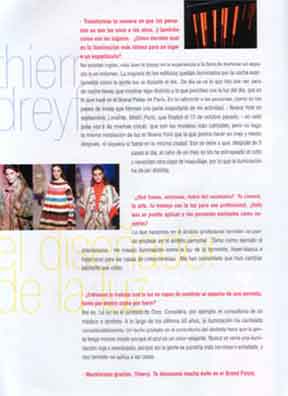
TD : There are no rules but rather you depend on experience, when it comes to lighting a space or a volume. Most buildings are illuminated at night exactly the same way as people can see them during th day. In daytime you see what there is to see, but at night you have to reveal something different from what you are able to see in the daylight, like I will do in the Grand Palais in Paris. As far as people are concerned, like in fashion shows which are an important part of my activity, you see the same girls who are the top models in every show, but I do no set up the lighting in the same way in NYC as I would do one and a half months later, even if it was in the same city. The reason is after 5 shows a day, their skin is spoiled after one month, they need a different kind of make-up and the lighting has to change.
What you do then, when you are not on stage ? Your science, your art, your work with the light for professional use, can this also be done for normal people like us ?
TD : What we do at a professional level can also be done at a personal level. Take, for instance, houses, interior design. I've created lighting like storm light, hyper white and hyper blue for collectors' houses. They said it made quite a change in their lives.
So can you work with lighting change people's appearance on the inside and the outside ?
TD : Yes. Light is the symbol of God. Consied, for ex, a doctor's surgecy or a dental pratice. Over the last 50 years, lighting has changed considerably. A bluish ceiling at the dentist's makes people less afraid because blue is calming. You would never see red or orange lighting, because that would make people nervous or angry and that is also valid at home.
Pier Albrecht - Transform magazine - winter 2006.